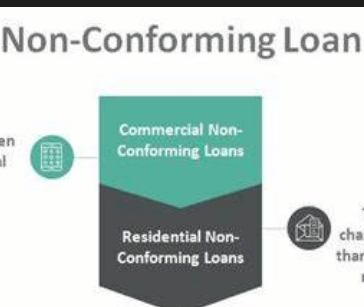The main difference between a conforming and a nonconforming loan is the loan’s size. A conforming loan is a conventional loan that falls within the GSE guidelines. A nonconforming loan is a loan that doesn’t meet the guidelines.
1) What is a nonconforming loan?
A nonconforming loan is a loan that doesn’t meet the guidelines set by the government-sponsored enterprises (GSEs) Fannie Mae and Freddie Mac. The GSEs purchase loans that conform to their guidelines in order to sell them to investors on the secondary mortgage market.
Nonconforming loans don’t conform to GSE guidelines. They may be too big or too small, have the wrong type of borrower, lack documentation, or have other issues. As a result, they can’t be sell to Fannie Mae or Freddie Mac.
Jumbo loans are too big to be sold to Fannie Mae or Freddie Mac and are held by the lender in their own portfolio. Portfolio loans are also held by the lender in their own portfolio.
2) What are the benefits of a nonconforming loan?
A nonconforming loan is a loan that doesn’t meet the guidelines that are set by government-sponsored enterprises (GSEs) such as Fannie Mae and Freddie Mac. The biggest difference between a conforming and a nonconforming loan is the loan’s limits. These limits are set by the GSEs and usually follow the guidelines of government housing finance agencies (FHFA). For instance, in 2020 the general loan limit for a single-family home is $510,400. But in some high-cost areas, the limit can be as high as $765,600. Borrowers who need a loan amount that falls outside of the conforming loan limits will need to apply for a nonconforming loan.
There are several benefits of a nonconforming loan. The most obvious benefit is that it allows borrowers to finance a higher loan amount. This is especially helpful for borrowers who need to finance a luxury home or an investment property. Nonconforming loans also tend to have fewer restrictions, which can make the loan process easier. For instance, borrowers with less-than-perfect credit may be able to qualify for a nonconforming loan. And, in some cases, borrowers may be able to avoid paying private mortgage insurance (PMI).
3) What are the risks of a loan?
The risks of a loan can be broadly divide into two categories: financial risks and non-financial risks.
Financial risks are those that relate to the financial health of the borrower. They may be consider a high-risk borrower and may be charge a higher interest rate on their loan. Non-financial risks are those that don’t relate to the borrower’s financial health, but may still affect their ability to repay the loan. A borrower who is self-employ may be consider a higher-risk borrower than someone who is employ by a company.
There are a number of ways to manage the risks of a loan. For example, lenders can require borrowers to provide collateral, such as a house or a car, which the lender can seize if the borrower defaults on the loan. Lenders can also require borrowers to take out insurance, which will pay off the loan if the borrower dies or becomes disabled.
4) How can I get a loan?
A nonconforming loan is a loan that doesn’t meet the guidelines that are set by government-sponsored enterprises (GSEs) Fannie Mae and Freddie Mac. The main difference between a conforming and a nonconforming loan is the loan’s size. A conforming loan is a mortgage that “conforms” to Fannie and Freddie guidelines. Specifically, a conforming loan must:
Be a certain size-Fannie Mae and Freddie Mac only buy loans that they deem “conventional.” That means the loans must be for a certain amount of money, and they must be for a certain type of property (like a single-family home).
Have a certain debt-to-income ratio-Lenders typically limit the size of your monthly mortgage payment to less than 28% of your gross monthly income (your income before taxes are take
Conclusion
A nonconforming loan is a loan that is not in compliance with the regulations set Federal Reserve Board. These loans are use by banks and other lenders to make loans to businesses and individuals who may not meet the standards set by the Federal Reserve Board. These loans are often use to help businesses and individuals who are experiencing financial difficulties and who may not be able to meet the other loan requirements.











